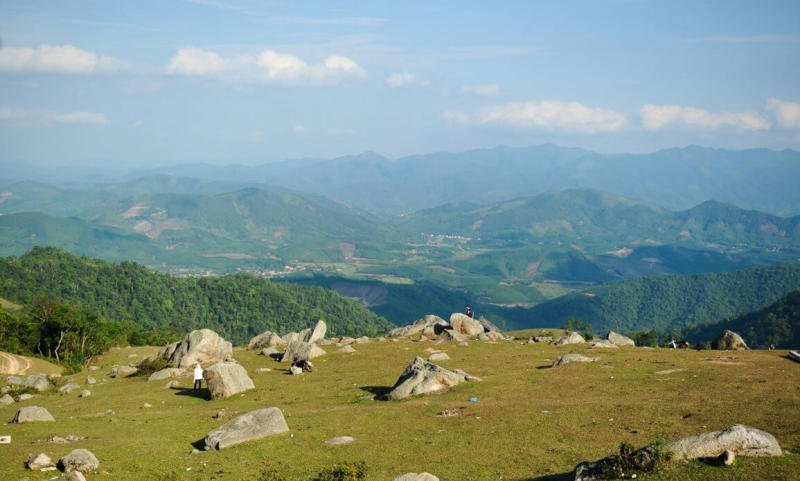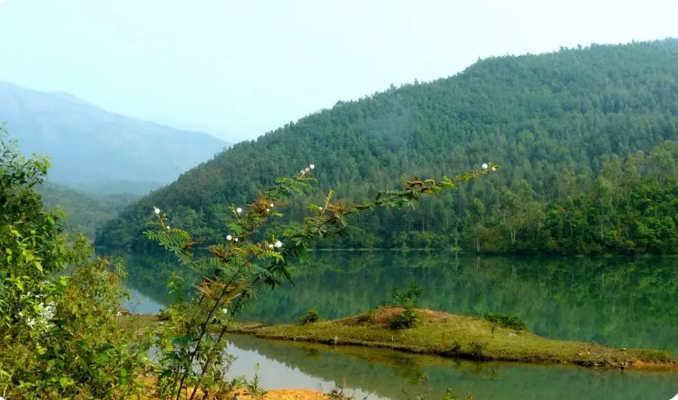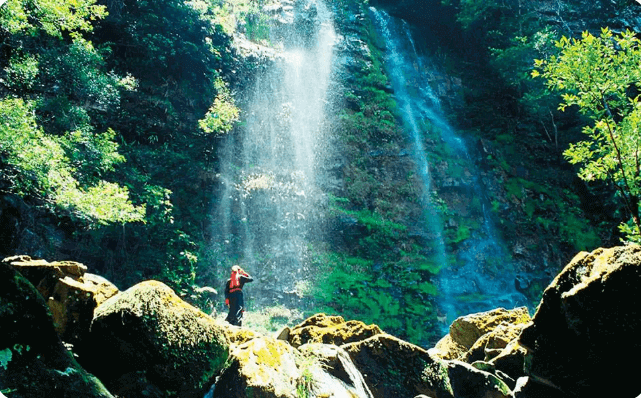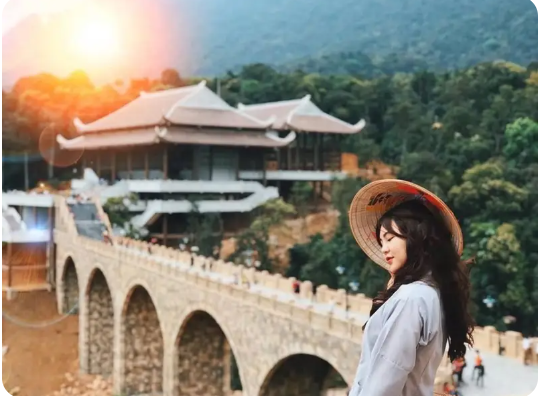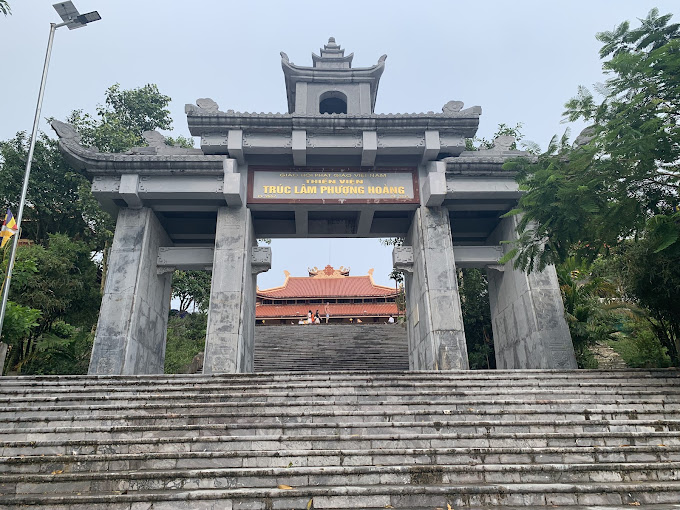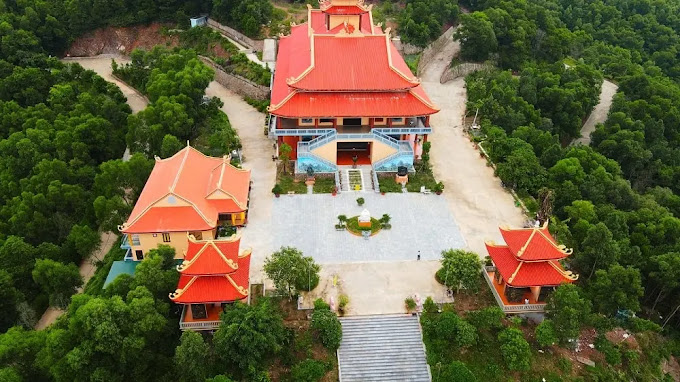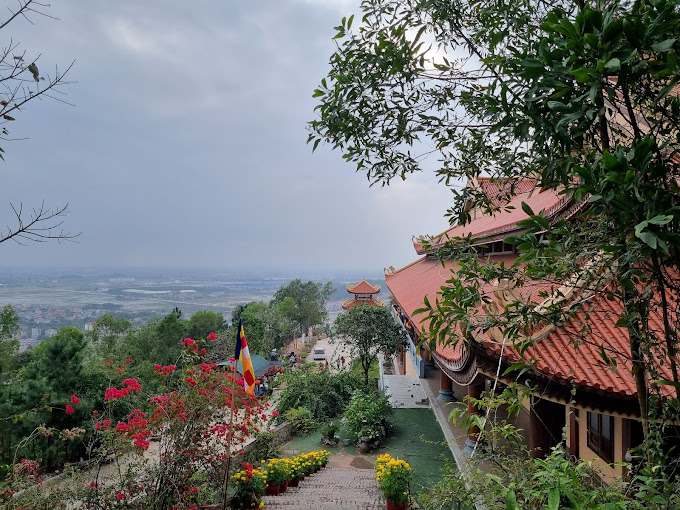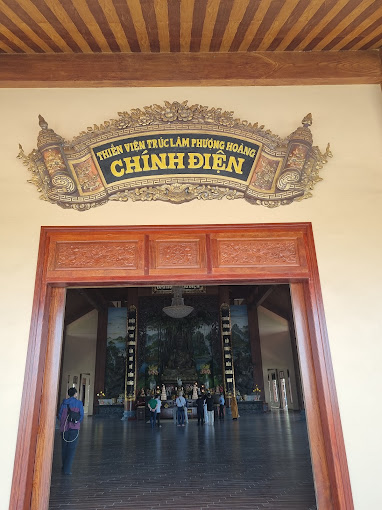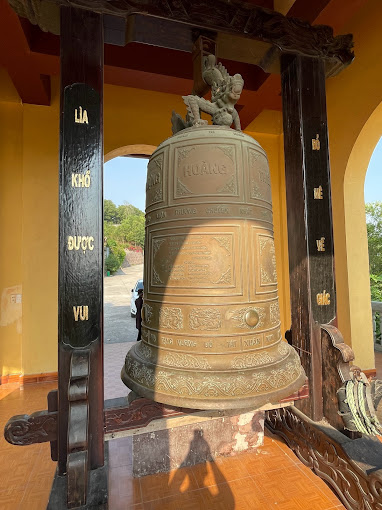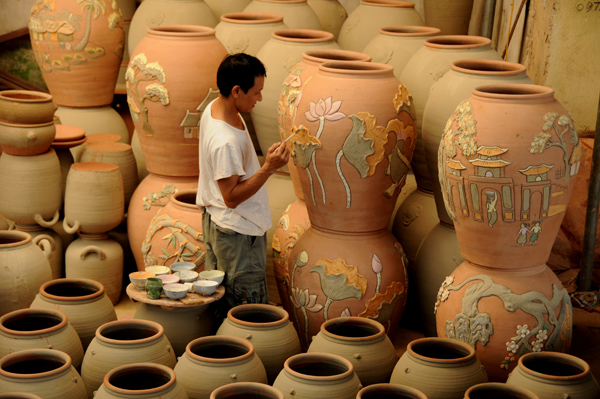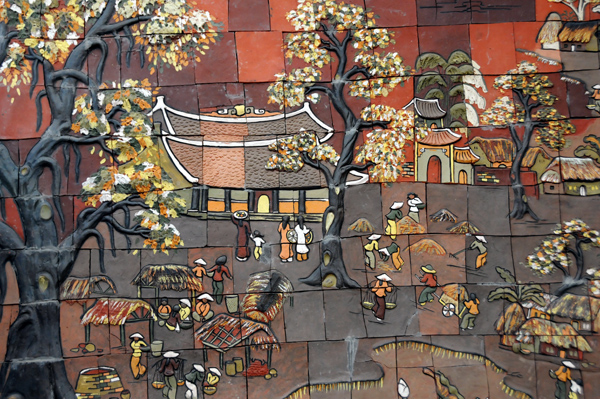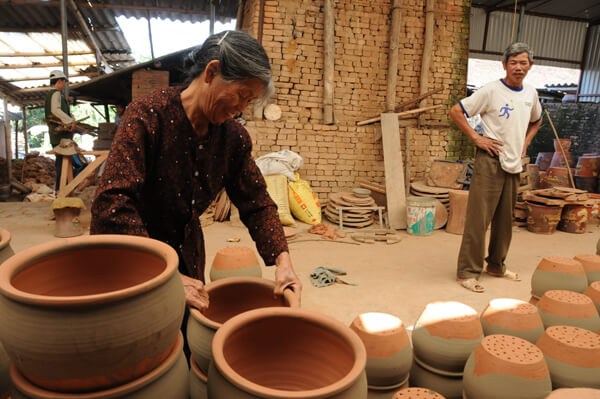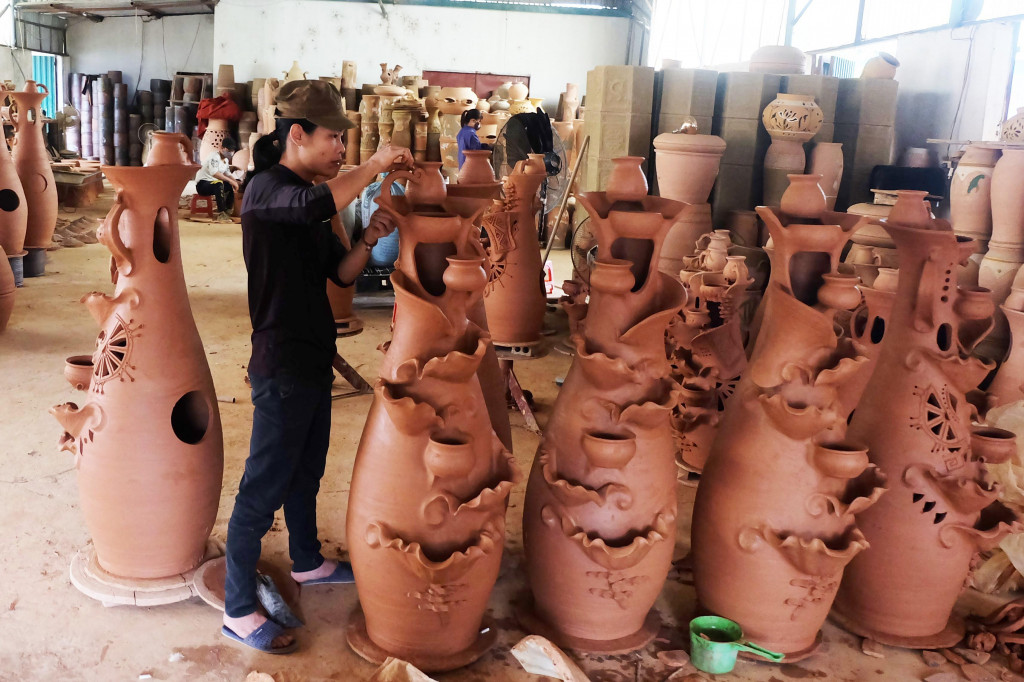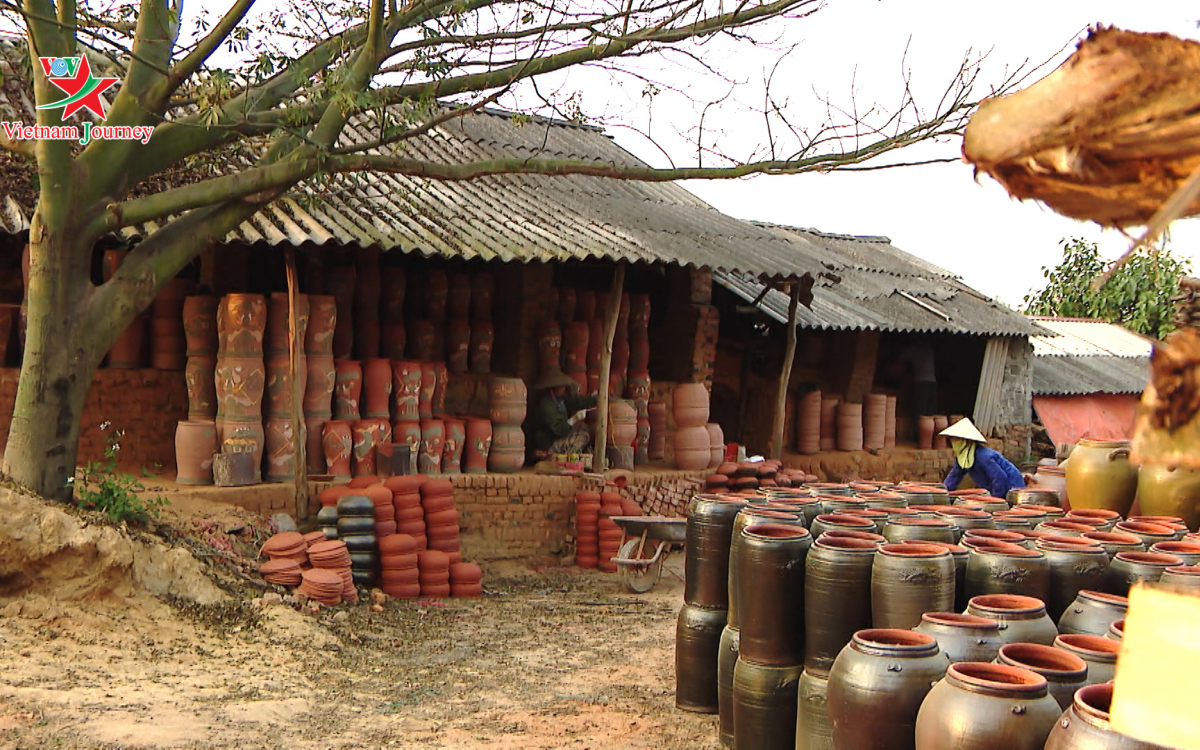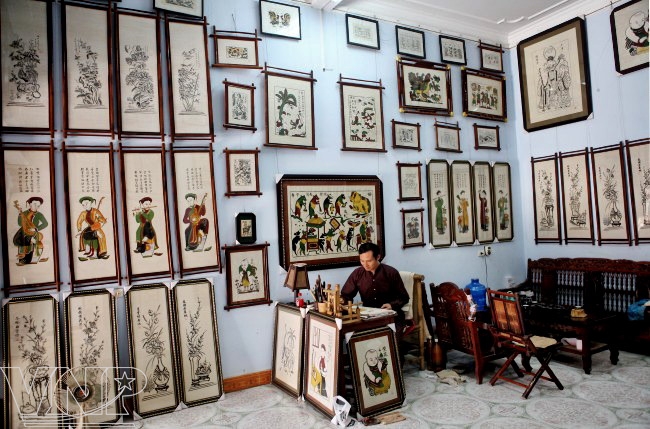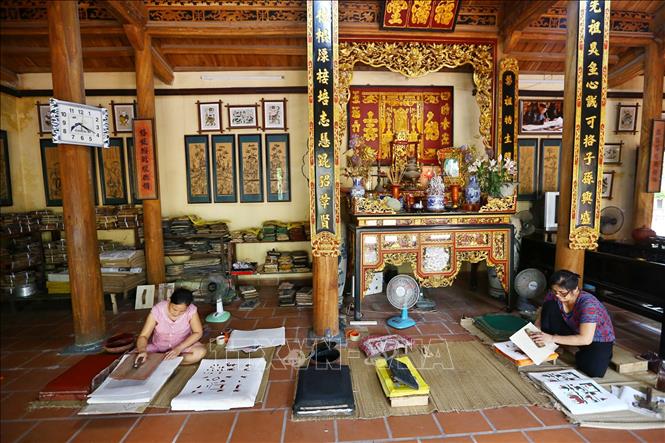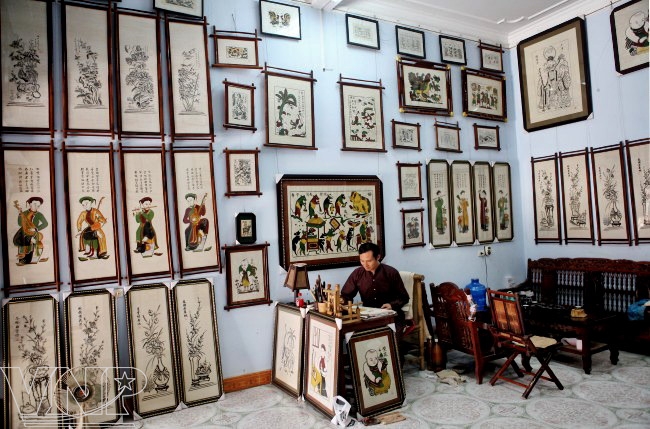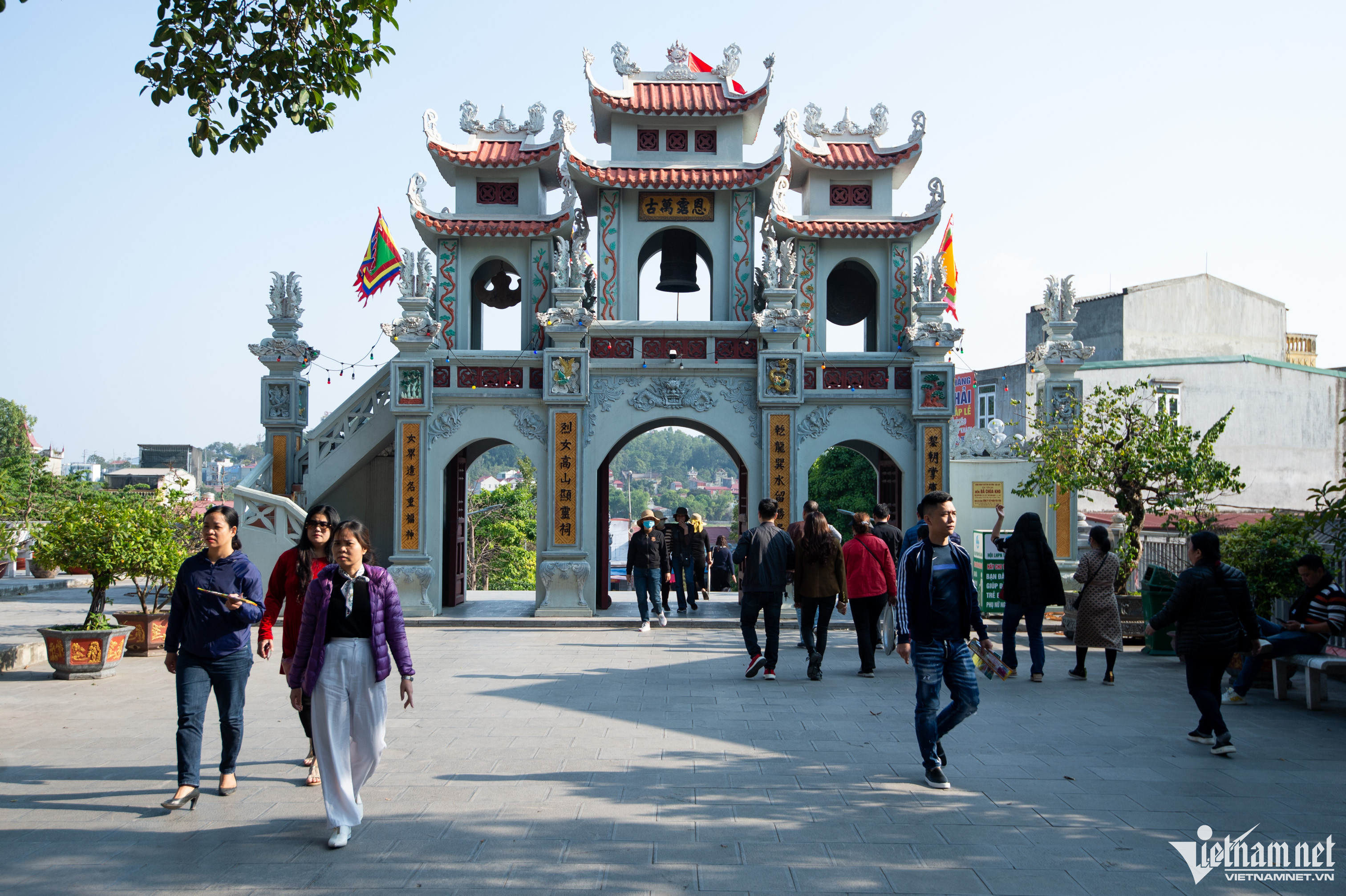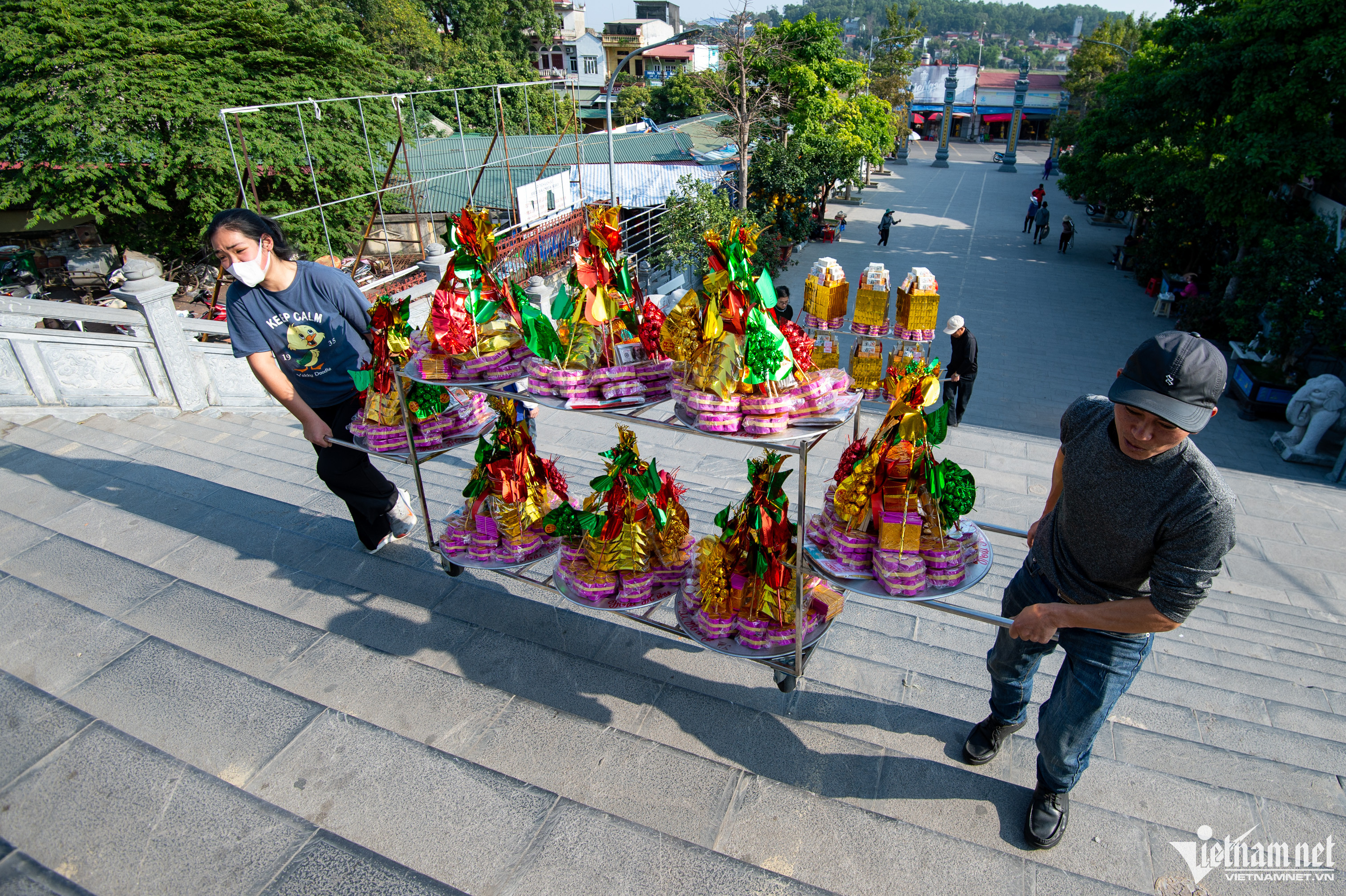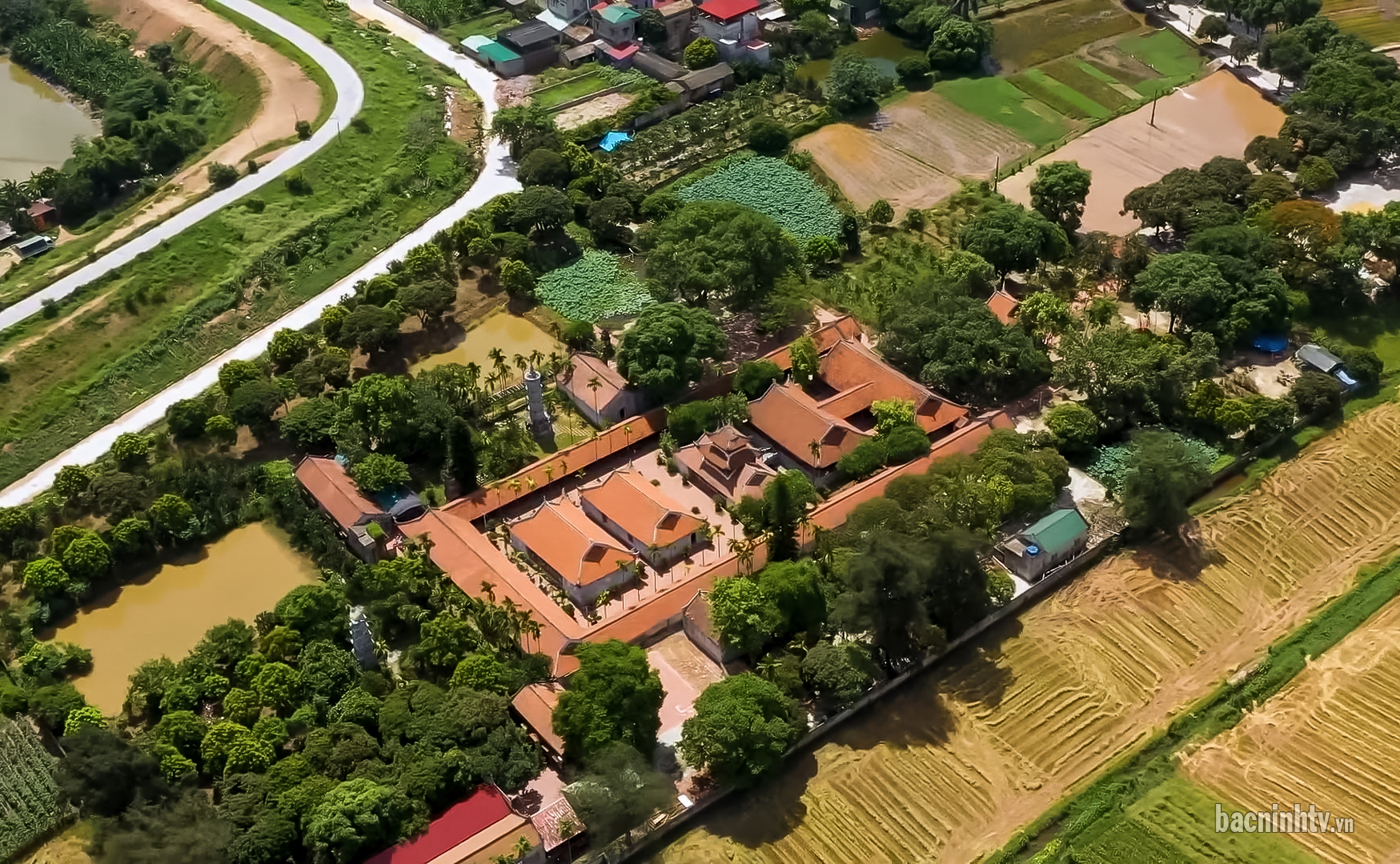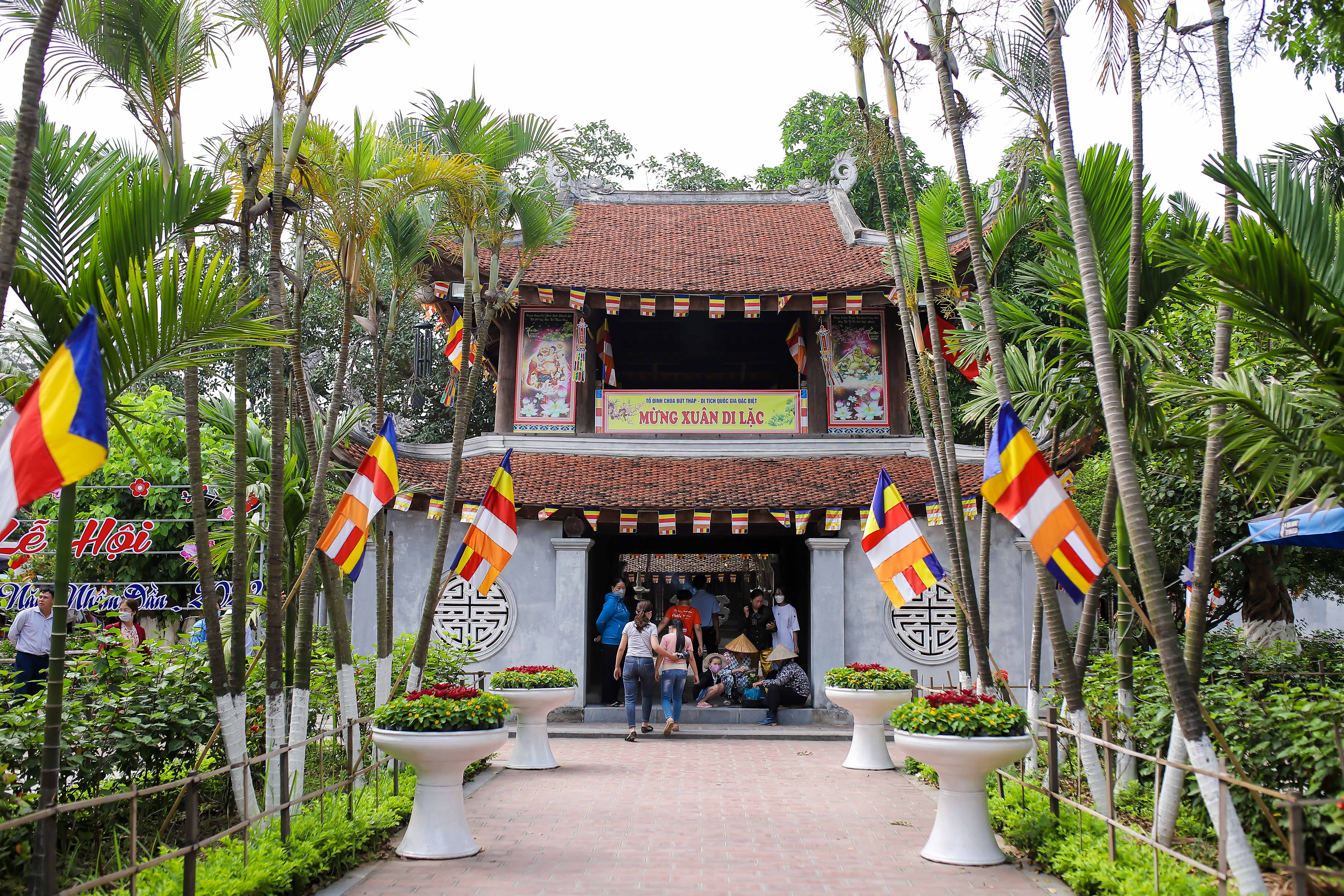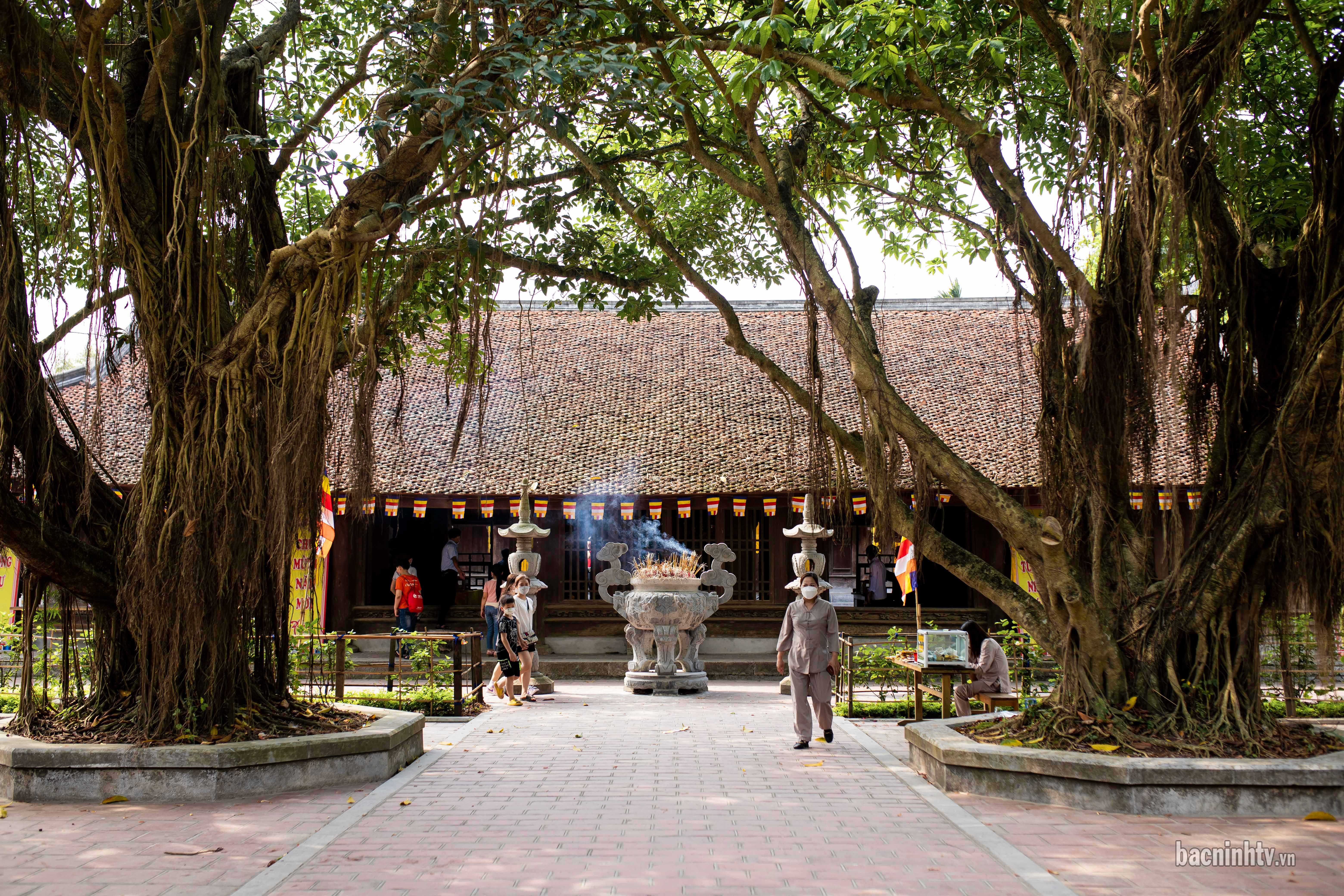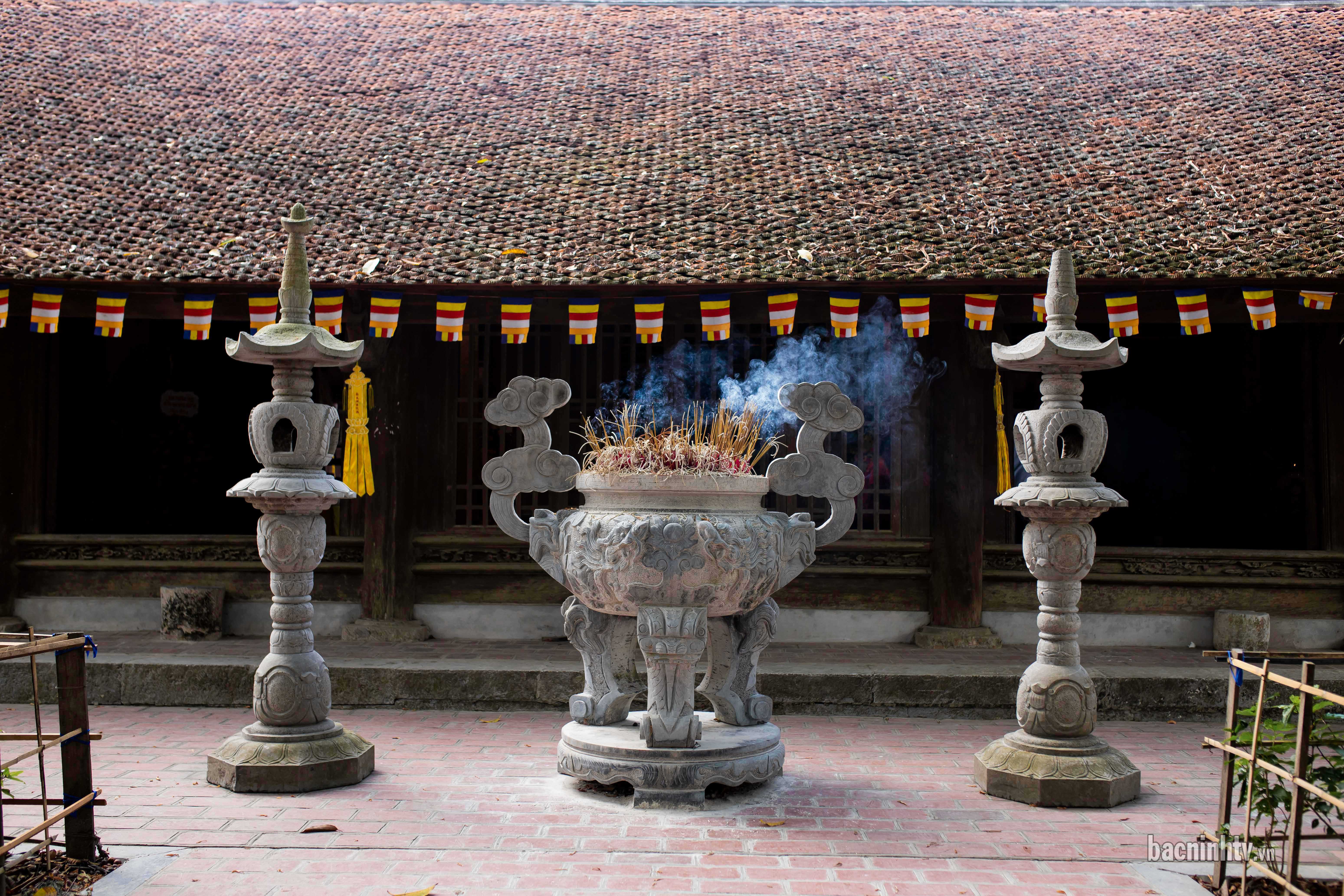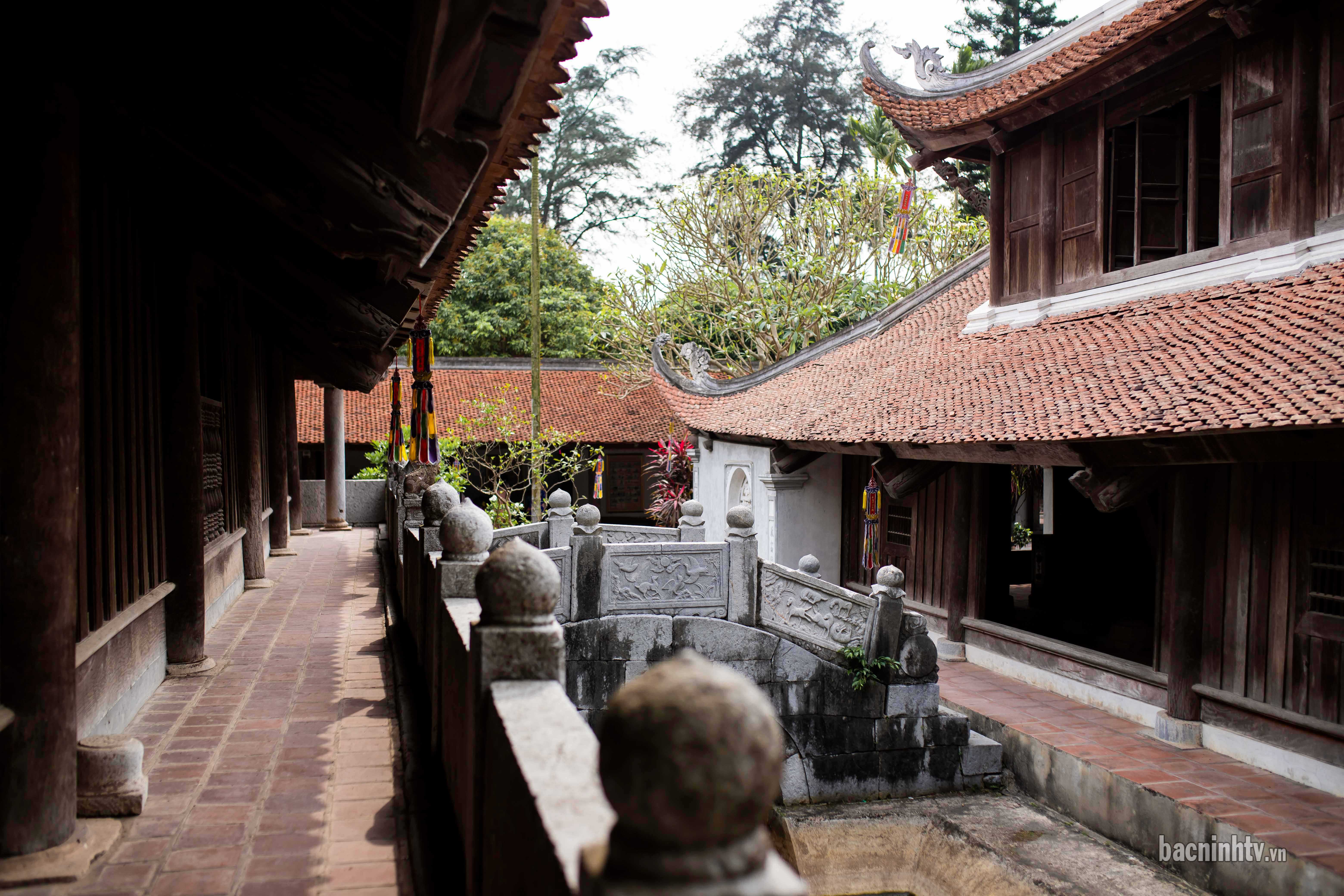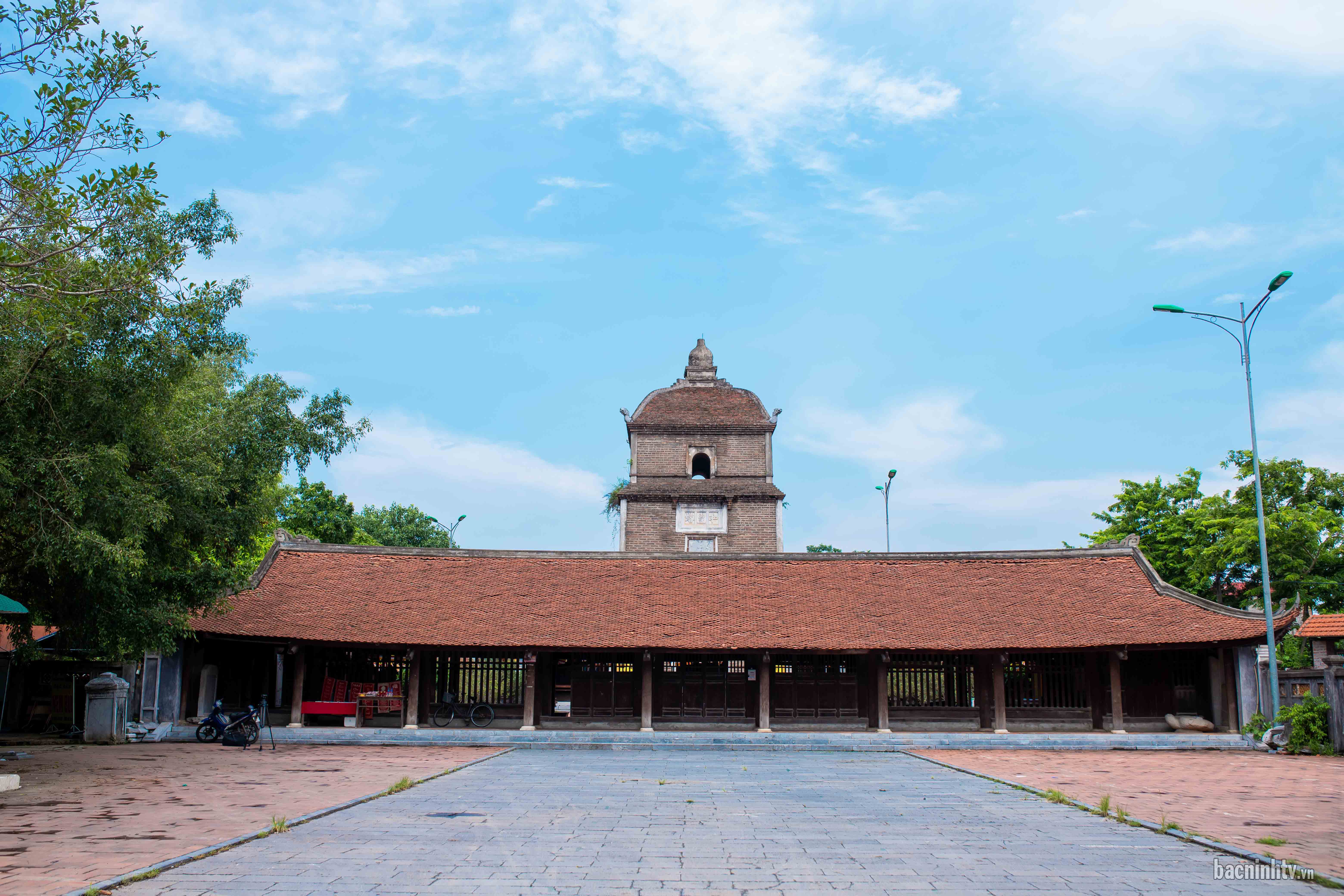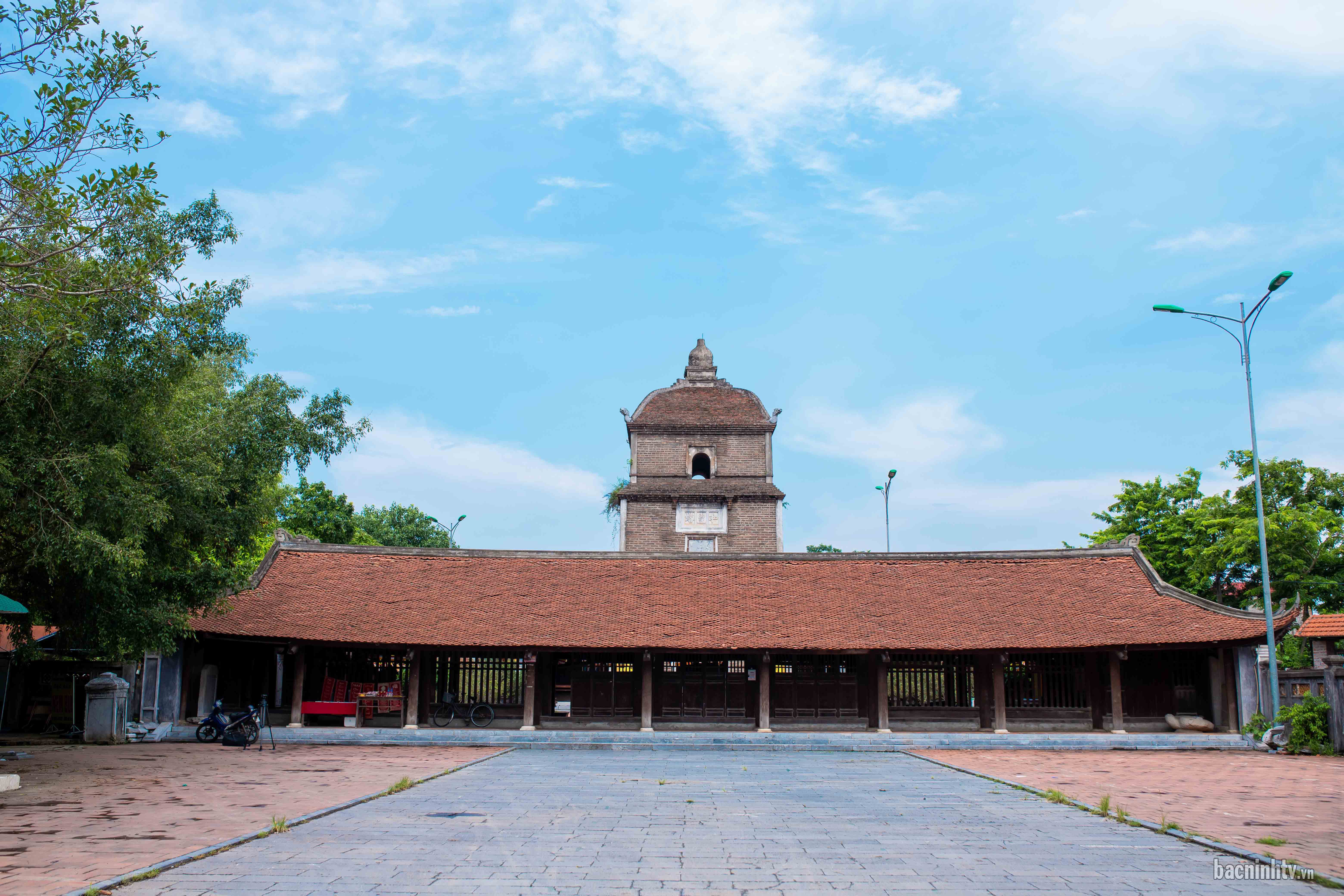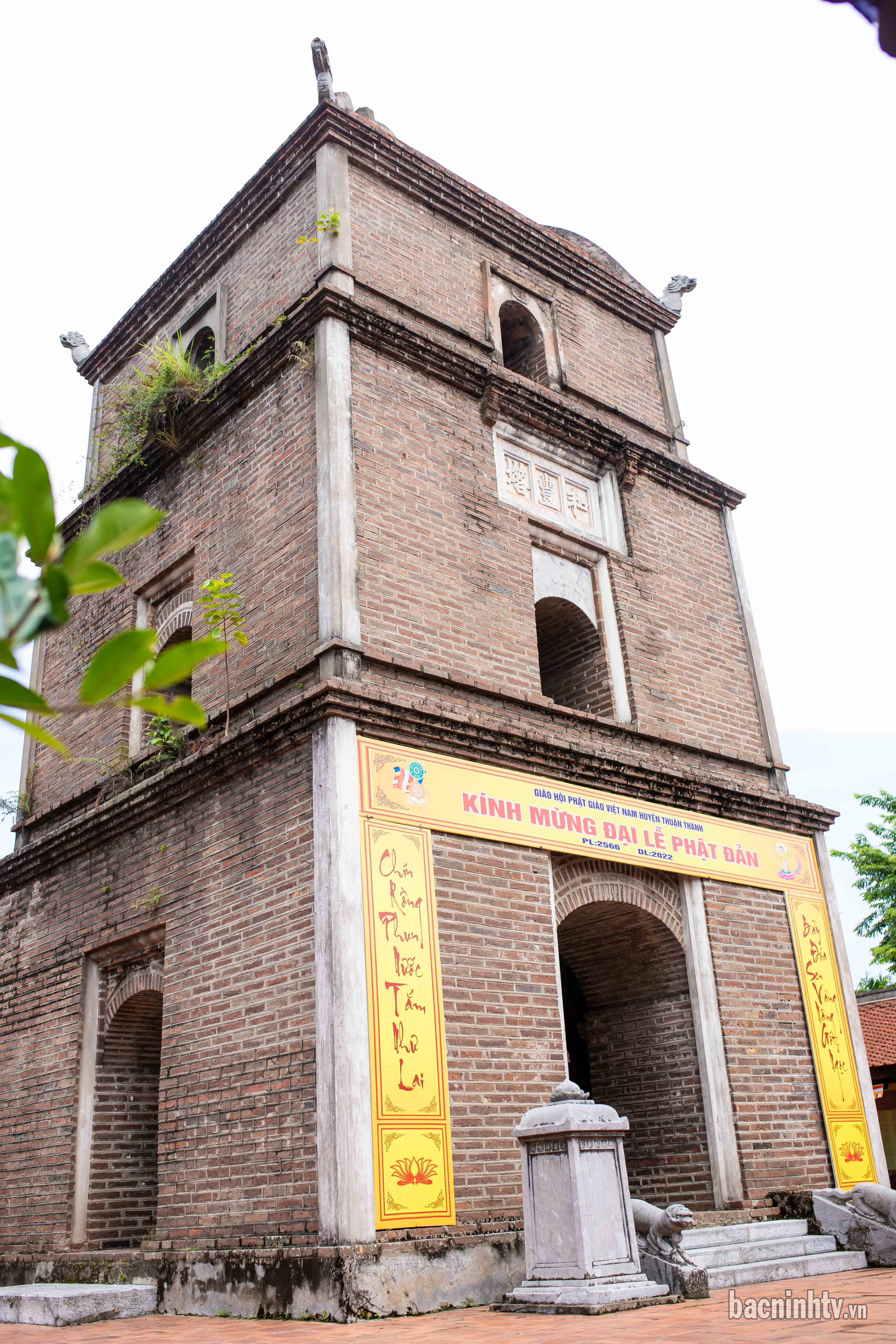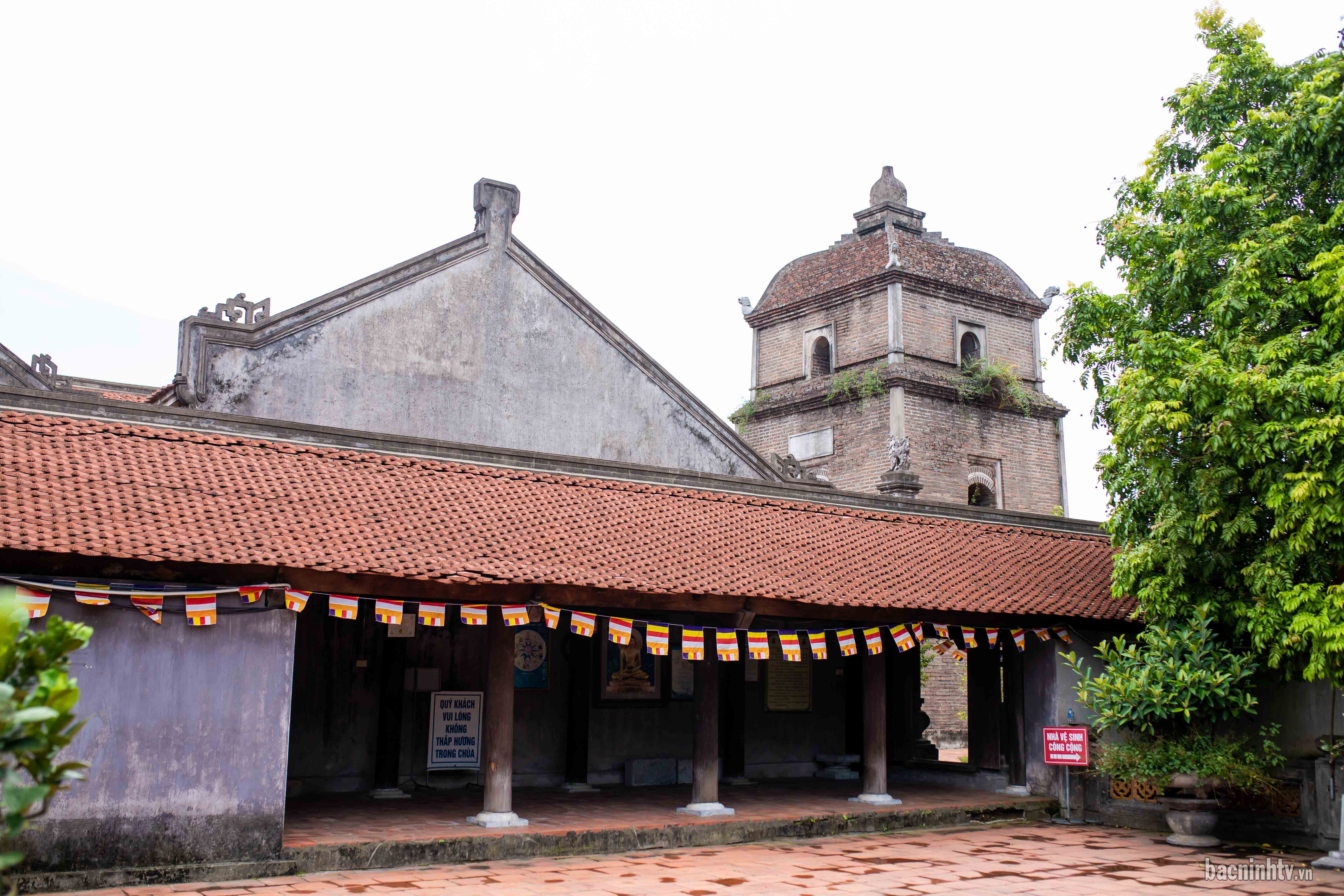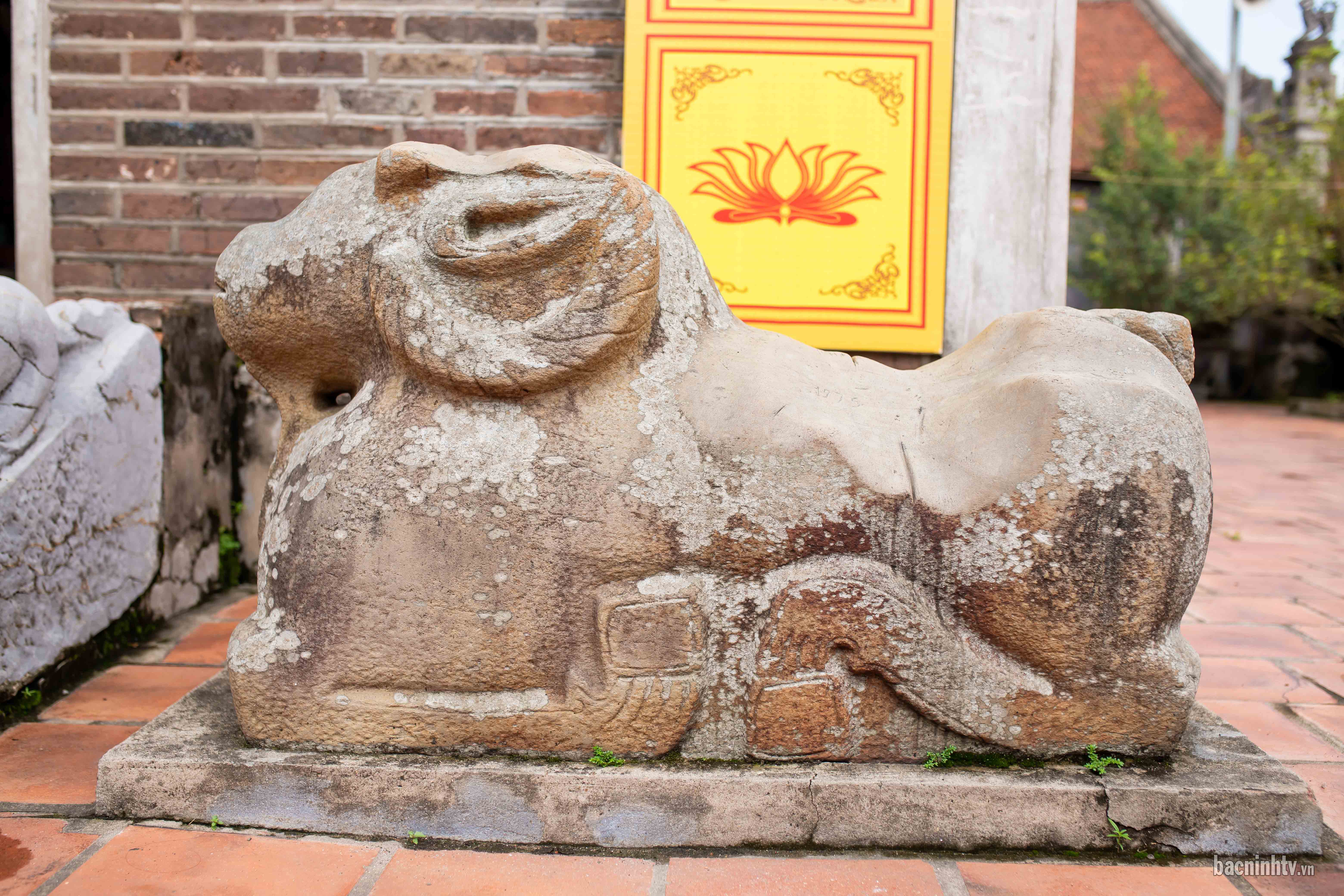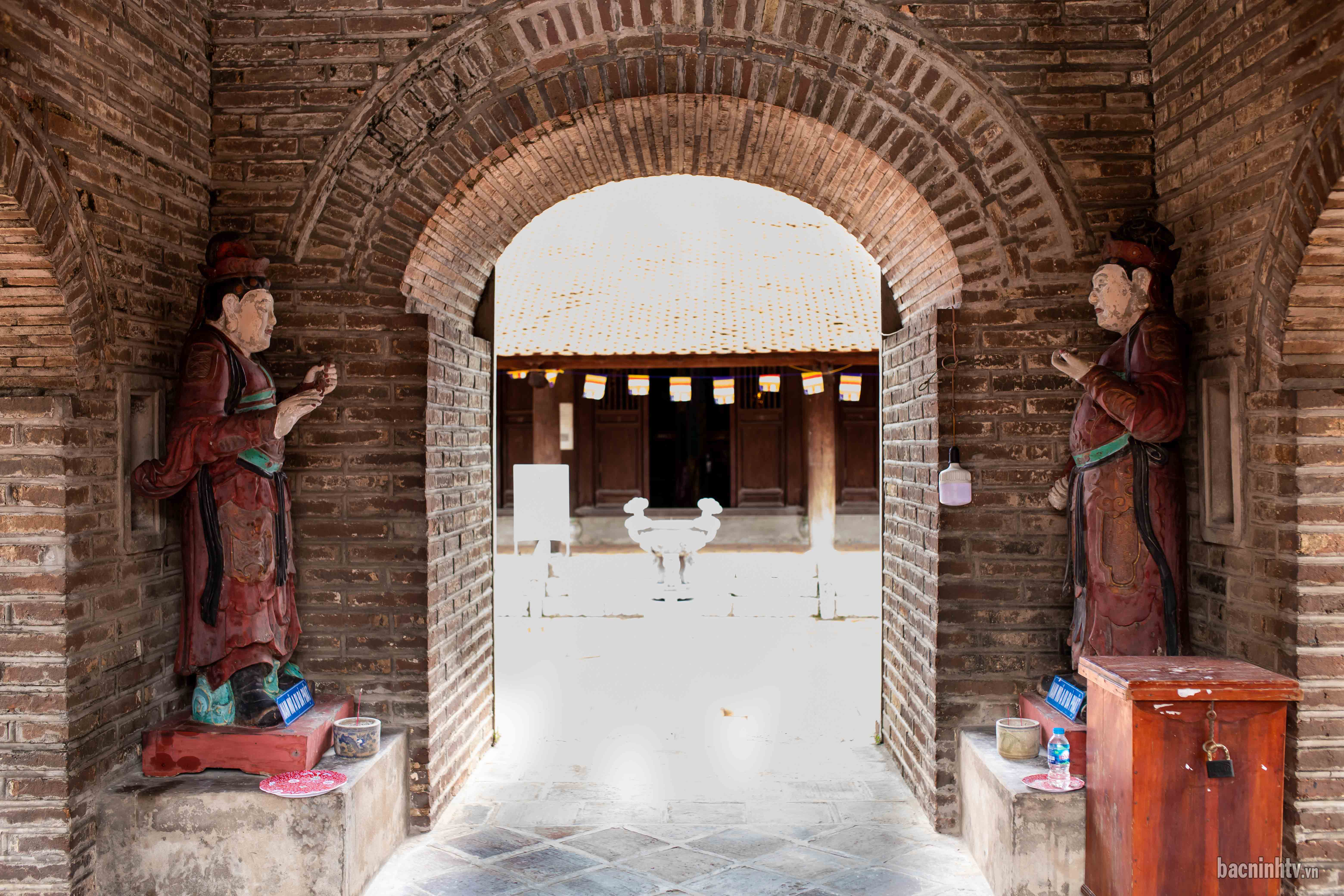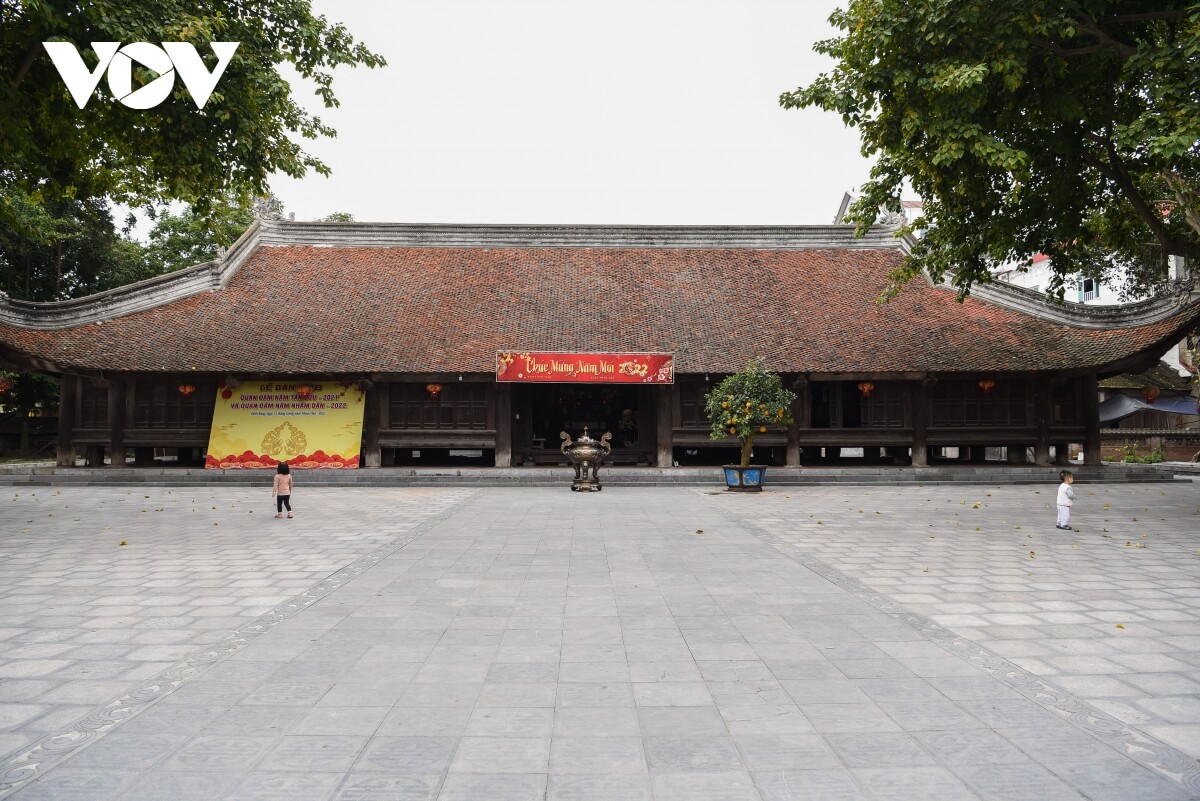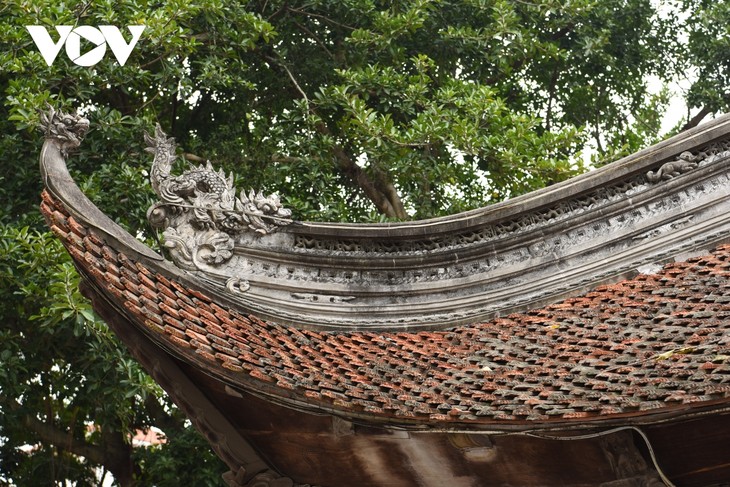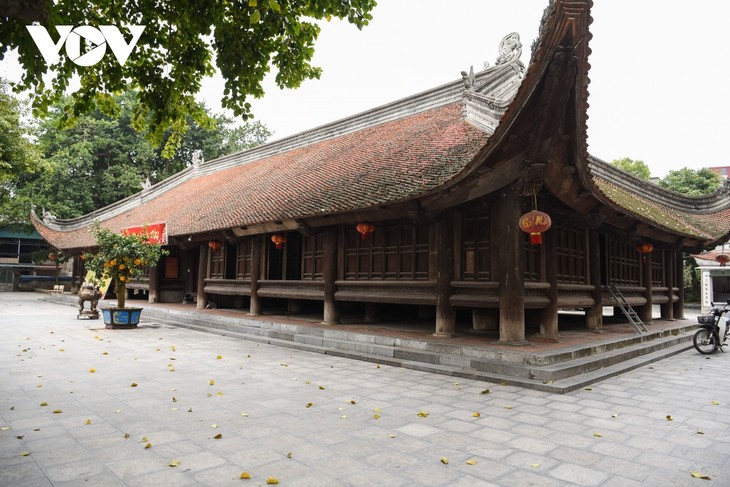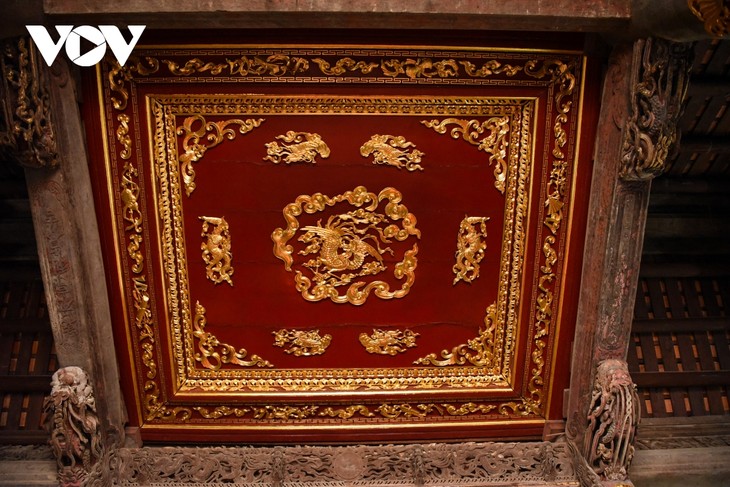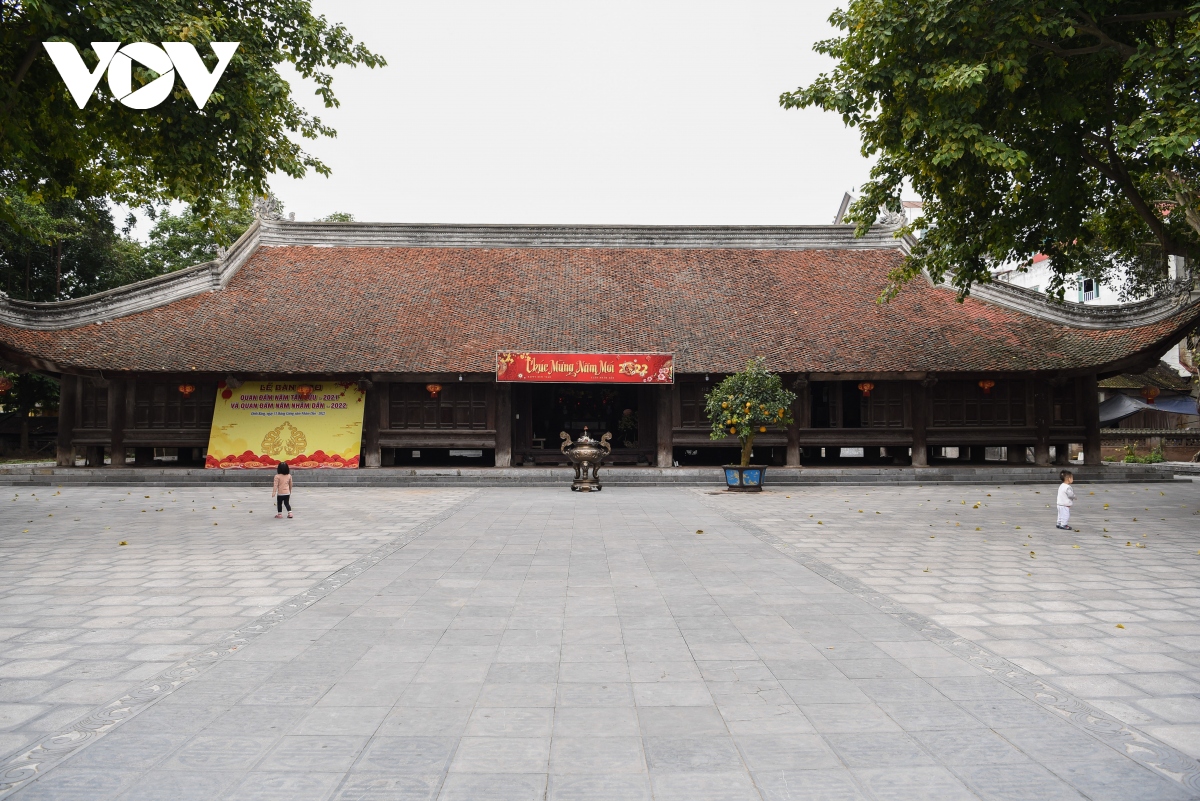Tourist destination
Na Hang tourist area
Cao Cao Plateau is one of the famous tourist destinations in Northern Vietnam. With majestic scenery, beautiful nature and unique culture, this place promises to bring visitors a memorable experience. Cao Cao is located in Ban Ga, more than 150km northeast. The height of this place is only about 600m above sea level but the terrain is very flat and airy. Bac Giang Cao Plateau is a perfect destination for weekend picnic. Coming here, you will be free to enjoy the fresh air, the pristine nature is like a fairy. Cao Cao is an ideal place to camp, explore and enjoy great nature. Many passionate discovery followers often choose to come here to rest, relax as well as "reset" themselves after a series of tired working days. Therefore, the pristine place like Dong Cao suddenly became famous, loved by many people and became a destination to attract a large number of people to visit every year. Copper has a cool climate in the summer and cold in the winter. The road is quite steep and soil so you need to avoid going in the rainy season. The ideal time for traveling is from September to November, when the weather is dry and autumn. You will have great experiences when picnic and camp here at this time. If you go in summer from June to August, you need to pay attention to the weather because you may have storms. Cao Cao is a beautiful plateau hidden among the majestic mountains of Bac Giang. It has a cool climate all year round like a miniature paint or Tam Dao. The green grass fields, white clouds flying, clear streams create a romantic and peaceful picture. Coming to Dong Cao, you will experience interesting activities and explore interesting things. You can stand on the top of the highest mountain in Dong Cao, about 600m above sea level, to see the sunrise and sunset brilliantly, causing heaven and earth to make one. You can also get lost in deep valleys, ancient cliffs with many strange shapes. This is also the place to produce beautiful shimmering photos, capturing so many memorable moments when coming to the field. Moreover, you will be immersed in the fresh nature, enjoy the taste of flowers and flowers and birds chirping. All worries and depressions of everyday life seem to melt, leaving only joy and relaxation. Dong Cao Bac Giang is an ideal destination for those who love nature and want to find a peaceful place. Bac Giang Cao Plateau is an ideal place to organize funny and attractive team building. You can play many good games such as robbery, tug of war, board game ... on green grass. All interesting games that you participate will leave you countless beautiful memories with this windy plateau. Besides, coming to the field, you will definitely not want to miss the camping experience and enjoy the fresh air. You can organize a delicious BBQ party in the starry sky, immerse yourself in music and confide with friends. The trip will bring many beautiful memories and unite the affection of everyone. Cao Cao is an ideal destination for those who love to explore the nature and local culture of Bac Giang. This place not only has majestic and cool scenery but also has many delicious dishes, rich in the taste of the homeland. You can try famous specialties when traveling to Bac Giang such as sweet lychee, greasy ant eggs, chewy bronze cake, fragrant shoulders ... The beauty of the bronze makes anyone who admire it for the first time can not take their eyes off. The fresh nature, the cool, pleasant atmosphere here helps you dispel all the surrounding troubles. If you are still looking for a peaceful place to "reset" your soul, come to the Cao Cao plateau.
Bac Ninh
From September to November.
2575 view
Na Hang tourist area
Tien Bac Giang Waterfall with beautiful beauty is an ideal destination that many believers explore to check-in and have fun. Hidden in Wedding Land amusement park, Phuc Thuong village is only 4km from the center, Tien Bac Giang Waterfall Tourist Area is an ideal destination for those who love nature and explore. Opened in 2020, Tien - Bac Giang waterfall tourist area spreads over an area of more than 10ha, giving you a diverse and interesting experience. You can admire the majestic beauty of the Dragon and Tien Waterfall, challenge yourself with the races and grass hills, enjoy the peaceful space of the Japanese garden or explore the unique architecture of the old town. Hoi An and Bukchon Hanok ancient village. In addition, you can also enjoy extremely attractive dishes when coming here. Bac Giang waterfall tourist area is a place that gives you new and interesting feelings when you admire the wonderful beauty of nature. You will be lost in another world when standing in front of the fairy waterfall where white water is murmuring from 25m to create sparkling bubbles in the sun. You will not be able to take your eyes off the beautiful corners of the tourist area where you can take photos with poetic photos along with the natural landscape. This place gives you the feeling of blending between mountains and water, between humans and nature. This is a new feeling that not all attractions can bring. If you are a photographer, you can not miss the Tien Bac Giang waterfall tourist area - where there are many unique and beautiful designs and architecture. You will have the opportunity to take photos with different spaces from modern designs such as stone castles, races, grass hills to areas with bold culture of different countries such as ancient towns. An, Bukchon Hanok ancient village of Korea, Japanese garden ... However, the most prominent feature of this resort is Tien and Suoi Rong - where you can see the majestic beauty of nature and take photos with The charming paintings. One of the things that makes people love this place is the experience that the tourist area brings. Coming to Tien Bac Giang Waterfall, you can participate in entertainment games with family and friends. Children are extremely fond of this destination and are often visited by their parents. Inside the tourist area, there are fruit gardens, swimming pools for adults and children. Make sure wearing a backpack on the way to visit will not make you regret. In the upcoming discovery journey, it will be great if you spend time playing and admiring Tien Bac Giang waterfall tourist area as picturesque. This fascinating sightseeing and playing point every year welcomes a large number of people to explore. So what are you waiting for without hurrying to invite your friends and relatives to the Tien waterfall. Numerous interesting things are still waiting for you to explore.
Bac Ninh
From April to June.
2862 view
Na Hang tourist area
Capital famous for its long -standing historical value, today, Bac Giang is also known and visited by famous tourist destinations. Not only prominent by the charming scenery and rich flora and fauna, the tourist destinations here bring a very wild but very well -groomed color that makes anyone want to visit. once. And if you are also a tourist and natural discovery lover, surely you cannot miss the opportunity to experience the conquest of the mountains in the famous West Yen Tu Nature Reserve in Bac Giang. Yen Tu - a place associated with the old stories and the pristine rustic image is a high mountain range, the largest conservation forest in the Northeast. Located in the communes of An Lac, Thanh Son, Thanh Luan, Son Dong and Luc Son commune, Luc Nam district, Bac Giang province, Tay Yen Tu Nature Reserve is located in the Yen Tu mountain range, distributed at level From 200m high to more than 1,000m above the sea surface and have a complex high terrain. This is the main high mountain range within the Dong Trieu arc extended from Quang Ninh province to Hai Duong - Bac Giang and ended on the left bank of Luc Nam River. This mountain circuit is famous for two primeval vegetation, which is a multi -storey forest and dry forest. According to many sources, Yen Tu forest still retains a large forest resource and is one of the few forests that are still eligible to build a large natural inventory with an area of over 17,000 hectares and the total amount of wood. reaching nearly 1,000,000m3. Currently, this Yen Tu forest area still retains intact wild features, partly thanks to the rugged terrain, causing the difficulty in accessing, especially the waterfalls and steep roads. Tall and many gravel are difficult to penetrate. According to the results of the investigation, the original in Yen Tu forest area has 728 species of plants and 226 animals, of which there are dozens of species of plants and animals of the rare and rare type. In Vietnam Red Book is in danger of extinction. Some examples of rare and precious forest plants are very famous as species: Po mu, nails, lim, cheeses, mahogany, slices of flowers, frankincense, bamboo pine, pine, green lim, small leaves .... Rare medicinal herbs such as Sa Nhan, Hoang Tinh with wings, Ngu Gia packaging, crow's feet, beard, white flower, three jacks, Sa Nhan .... Along with that, the West Yen Tu Nature Reserve also has some very characteristic forest animals such as leopard, cu li, black langur, wolf, horse bear, yellow monkey, golden deer, paint, period, period Da, large squirrel, chicken money, pheasant, yellow turtle, king cobra ... The system of organisms and land in Yen Tu area is generally not identical. The most prominent is the area where there are many slots plunging down the cliffs to create large waterfalls, such as: Gold waterfall, Giot waterfall , .... The image of the painting of the painting is mixed with a small water source, mainly wet only at the bottom of the slot, so the trees only grow along the along the slots that are almost not in the mountainside. Panoramic view, Yen Tu is a large mountain range, a paint name of the Northeast. West Yen Tu Nature Reserve is known for many rare and precious forest flora and animal genes, which are characterized by the Northeast of Vietnam, something that many other nature reserves do not have. It is also because of this that the government units and tourism companies always need to continue investigating, evaluating and protecting at the maximum of the existing dynamic and flora systems, to partially complete the real portfolio. Animals and animals are partly detailed to preserve and develop ecological carpets here. Yen Tu is a famous place with bold culture and Buddhist substance, a place to preserve and preserve historical sites from thousands of ancient generations, so thanks to the experience of exploring the nature conservation of Tay Yen Tu, Visitors not only admire the beauty of pristine mountains but also have more understanding about the history of Vietnam for thousands of generations. In the territory of Tay Yen Tu Nature Reserve, there are many famous victories recorded by the ancient history books, gathered into a large population and most, the relics located in Bac Giang province are areas. Ancient relics, dating back to the Ly - Tran dynasty. Because of that, Yen Tu is always famous as a population with historical and cultural monuments with bold Buddhist colors founded by King Tran Nhan Tong in our country's history. Thus, the West Yen Tu Nature Reserve is a place with all factors of scenery, society, history recorded by history books with majestic environmental landscapes, forest trees are quite intact and less intact. devastated. It can be said that this is a charming place, famous paint. In addition, this is also a very crucial forest area of Bac Giang province, has a great effect in protection, environmental landscape and scientific research and in particular, Tay Yen Tu Nature Reserve is also the location Great travel for nature lovers and spiritual travel. Spring or summer is the most ideal time to experience the wonderful atmosphere at the West Yen Tu Nature Reserve: In the spring, especially after Tet, at the West Yen Tu Nature Reserve, there are many festivals with many unique activities with cultural identity so that you can participate. If you visit here in the summer, you will be able to participate in many tours. Especially, although in the summer, on the West Yen Tu Nature Reserve, the air is always cool and pleasant, so you are completely assured to visit. For West Yen Tu Nature Reserve, you should especially avoid visiting in the rainy months from August to November every year. Because here, the rainy days will make the road to Yen Tu more difficult and more dangerous, which greatly hinder moving and playing. The weather should be paid attention if you really want to travel to Bac Giang at this time. The journey to explore the Western Yen Tu Reserve is an impressive experience, where visitors are not only fascinated by the majestic beauty of the mountains but also immersed in the spiritual atmosphere and unique culture. Through each step, visitors will better understand the long history and the nature conservation value of this area.
Bac Ninh
From January to June.
2628 view
Na Hang tourist area
Vietnam is always favored with unique natural scenery, scenic spots stretching from North to South leaving an unforgettable impression in the memories of thousands of tourists. Although Bac Giang province has a rather modest area on the S-shaped map, it still has a significantly developed tourism industry. Coming to Bac Giang, you can explore tourist destinations such as Vinh Nghiem Pagoda, Delta Plateau,... and especially cannot miss the spiritual tourist destination Truc Lam Phuong Hoang Zen Monastery. Truc Lam Phuong Hoang Zen Monastery is located in Nham Son commune, Yen Dung district, Bac Giang province. In 2011, construction began on this place with an area of more than 18 hectares, and has now been completed. The monastery was built on top of Non Vua, which is the highest peak of the Nham Bien range. At the top of the mountain there is also a Sky Well, also known as a Heavenly Cave, containing fresh, clear blue water. In addition, at the foot of Non Vua mountain is Hang Dau slot where the Moon Nham of 9 Phuong mountains gathers with abundant water sources and rich vegetation. Therefore, the Zen monastery is surrounded by majestic mountains and forests, bringing a sense of comfort, helping tourists immerse themselves in nature and forget their troubles. Truc Lam Phuong Hoang Zen Monastery includes works such as Tam Quan Gate, bell tower, drum tower, ancestral house, main palace, library,... The works are all designed with a majestic style but still have a strong character. Unique features of traditional Vietnamese Buddhist cultural architecture. The first highlight is the mountainside road from the foot of Thien Vien to Tam Quan gate with more than 300 large stone steps. Coming to Tam Quan gate, visitors can easily see the words "Tru Lam Phuong Hoang Zen Monastery" lying majestically on the gate. In addition, the main hall - the main item of the project with a total area including the 1st and 2nd floors is 3000 m2. In front of the main hall are two bell towers and drum towers located next to Tam Quan gate, creating a symmetrical and harmonious position. The inside of the main hall is decorated with wall paintings telling the story of the life of Buddha Shakyamuni since he was born. At the same time, there is a system of other sculptures such as Master Shakyamuni, Pho Hien, Manjushri, Patriarch Dharma and the statue of Tam To Truc during the Tran Dynasty, Giac Hoang Dieu Ngu Tran Nhan Tong, Bamboo. Second Patriarch Lam Dong Kien Cuong Phap Loa and Third Patriarch Truc Lam Huyen Quang Ly Dao Re. Truc Lam Phuong Hoang Zen Monastery is planted with many trees to create a feeling of peace, a peaceful place for Buddhists and tourists to find peace and serenity in their souls when coming here. According to the experience of traveling to Truc Lam Phuong Hoang Zen Monastery that tourists have accumulated, Bac Giang's climate is divided into two distinct seasons including the rainy season and the dry season, so this place always has a unique green beauty around it. year, each season possesses its own unique beauty. However, the best time to visit the Zen Monastery is from June to September. Tourists, in addition to having the convenience of visiting the Zen Monastery with pleasant and comfortable weather, are also fascinated by the bright red streets. on green foliage. Truc Lam Phuong Hoang Zen Monastery in Bac Giang is a famous spiritual tourist destination both inside and outside the province. When visiting this place, visitors will be able to worship and pray for peace and health for themselves and their families. At the same time, with architecture imbued with Buddhist traditions and works closely linked together, it creates an ideal spiritual space for tourists and Buddhists. In particular, each year the Zen Monastery also organizes retreats for many different ages to come and experience here. These retreats will help you know more things, find the value and meaning of life, and love life more. Truc Lam Phuong Hoang Zen Monastery in Bac Giang with cultural, sports, and spiritual tourism projects promises to make an important contribution to preserving and promoting traditional values while creating many promotional values. economic, cultural and social development in Bac Giang province.
Bac Ninh
From June to September
3450 view
Na Hang tourist area
Phu Lang Pottery Village is one of the hundreds of years old craft villages, located in Phu Lang commune, Que Vo town, Bac Ninh province. The pottery village is located next to Luc Dau river, very convenient for production and transportation of goods. Pottery making is considered the main economic activity of the people here. When visiting Phu Lang pottery village, you will see many ceramic products and dry firewood drying along both sides of the road. The products produced by Phu Lang pottery village are also extremely rich in design, style and color. In general, it will include three main product groups: household appliances, worship items and decorative items. Making pottery requires the artist to be meticulous and skillful through many different stages. From choosing and treating soil, shaping, glazing, and firing ceramics, all require a certain level of skill. By visiting Phu Lang pottery village and seeing it with your own eyes, you can fully appreciate the talent of the ceramic artists. Visitors can explore Phu Lang pottery village at any time of the year. The craft village is always open to welcome tourists from all over with many attractive activities. If you are passionate about collecting ceramics, go to Phu Lang pottery village in December. The end of the year is the period when the pottery village improves its productivity, producing many new and beautiful designs to serve the needs of spring joy and Tet. Besides, Bac Ninh also has many attractive festivals such as Lim festival, Dinh Bang festival, Dau Pagoda festival, Ba Chua Kho temple festival, Phat Tich pagoda festival... You can go to Phu Lang pottery village on During the festival months, you can both explore craft villages and experience the festive atmosphere in Bac Ninh province. Phu Lang Pottery Village has the peaceful, rustic beauty of a Northern village. Houses with undulating tile roofs, ceramic kilns, and piles of dry firewood piled high overhead run as far as the eye can see. Jars, jars, ceramic vases, ornamental pots... layered waiting to be completed. Checking in at Phu Lang pottery village promises to bring you beautiful photos of a lifetime. The products of Phu Lang pottery village have a unique beauty, extremely sophisticated and artistic. The characteristic that makes Phu Lang ceramic different is the enamel layer with eel skin color pattern, combined with the embossed method in the style of clamping. This helps make ceramic products durable and beautiful while still retaining the pristine features of earth and fire. Coming to the craft village, you will be able to admire the extremely beautiful ceramic works of Phu Lang artisans. Not only stopping at visiting or buying products as souvenirs, when coming to Phu Lang pottery village you can also transform into artisans. Making a beautiful ceramic product the first time is not easy. However, this will be an extremely interesting experience when having a product made by yourself. You will be guided by the artisans on the basic steps and unleash your creativity. Who knows, you may also become a ceramic master.
Bac Ninh
From January to December
4175 view
Na Hang tourist area
Where is Dong Ho Painting Village or which province Dong Ho Painting Village is in is a question that many tourists are interested in when learning about this famous tourist destination. This folk painting village is located on the banks of Duong River, in Song Ho commune, Thuan Thanh district, Bac Ninh province, about 16km from Bac Ninh city center. Because it is not far from Hanoi, about 35km, this place is also called Dong Ho Hanoi painting village. Visiting here, tourists will be introduced to the history of Dong Ho painting village by artisans. Starting in the 17th century in Dong Ho village, Song Ho commune, Thuan Thanh district, Bac Ninh province, up to now, the painting profession here has been around for more than 400 years. According to historical records, around 1945, Dong Ho village had 17 families, all of these families made paintings. Having gone through the ups and downs of history, Dong Ho village currently has two families practicing painting: the families of artisans Nguyen Dang Che and Nguyen Huu Sam. Ho village paintings are loved because they show familiar themes, associated with the image of the countryside and the simple daily life of Vietnamese people. The people of Ho village know how to filter and apply natural materials to create traditional colors that are both fresh and highly durable: indigo from the Cham tree, crimson from the bark of the Van tree, black from Bamboo leaf ash or Chiffon ash,... Unique paintings are printed on Do paper. This type of paper is handcrafted from the Do tree growing in the forest. The paper background is often coated with a layer of resin or a layer of paste mixed with a little powder from Scallop shells to create a sparkling color. Therefore, Do paper is also called Diep paper. To make vivid paintings, craftsmen need printing boards. There are two types of engraved and printed boards: color printed boards and sharp printed boards. Printed boards are usually made from squid wood or thi wood. Printing board engraving tools are chisels, also known as ticks, made from hard steel. Colored printed boards are made from fatwood because they have a higher ability to retain color. The process of making Dong Ho folk paintings includes the following steps: Step 1 - Prepare Do paper: After picking it from the forest, the worker will pound it, sift it into fine powder and process it into Do paper. Step 2 - Printing the painting: The artist prints colors on the painting to create shapes. Normally, a painting requires 5 engravings, printed in 5 times. Step 3 - Drying the painting: After printing, the painting needs to dry to prevent smudging and color durability. Dong Ho Painting Village is one of the famous tourist destinations near Hanoi. Coming here, visitors will experience many interesting activities, contributing to making the trip to Dong Ho painting village more attractive and memorable.
Bac Ninh
From January to December
5048 view
Na Hang tourist area
Mrs. Kho was born into a poor family in Qua Cam village, Hoa Long commune, Bac Ninh city. After marrying King Ly, she asked the king to let him return to the village to recruit people to set up hamlets and clear the abandoned land. On that occasion, the king assigned her to take care of the food warehouse at Nui Kho (Bac Ninh). In the year of Dinh Ty 1077, she was killed by the enemy while distributing food to help the villagers. To commemorate her gratitude for wholeheartedly taking care of the people's prosperity and clearing wasteland, the people built a temple at the old royal food warehouse at Nui Kho and called her with reverence: Ba Chua Kho, her temple is ordained as "The sacred temple of Ba Chua Kho". In the early twentieth century, the French built a large-scale Indochina paper factory covering almost the entire Kho mountain and intended to demolish the temple but encountered fierce opposition from local people. In 1967, the American invaders bombarded the North. Bac Ninh City was one of the key areas that was bombed and destroyed in many places, but the temple still remains intact to this day. In 1989, Ba Chua Kho Temple was ranked by the State as a national historical and cultural relic and was restored, renovated and expanded by Bac Ninh province on a large scale today. Ba Chua Kho Temple is located halfway up Kho mountain, in Co Me area, Vu Ninh Ward, Bac Ninh City, Bac Ninh Province. Ba Chua Kho Temple today has the architecture of the Nguyen Dynasty in the style of Nhi, including 3 front worship rooms and 3 back palace rooms looking south. The main architectural works of the temple include the three-entrance gate, the temple yard, two dance bands, the front altar, the second gate and the harem. All create a unified, dignified population. Behind the harem of Ba Chua Kho Temple, there is still a tunnel with a dome-shaped structure located deep in the foot of the mountain, dug through the heart of Kho Mountain to the Cau River. Legend has it that this tunnel was built by Ba Chua Kho during the resistance war against the Song army. Currently, the temple still preserves many antiques of high historical value, which are two orders conferring the Khai Dinh era, bronze statues, silver brooches, ancient porcelain water vases,... Every year, on January 14, Ba Chua Kho Temple officially opens. However, right from the first days of the new year, lasting the entire month of January, many people flocked to Ba Chua Kho temple to attend the ceremony. Going to worship Ba Chua Kho has become an annual habit for many people. People pray for peace and fortune for their families, but mostly business people come to "borrow capital" from Ba Chua Kho, hoping for a year of abundant capital and favorable business. Because people believe that Ba Chua Kho is the person in charge of the food warehouse, the one who gives the "source of life" to everyone. The "borrow - repay" ritual is also very clear, people write in the note how much to borrow, what to do, and how long it will take to repay. Some people even promise to borrow 1, pay 3, pay 10, etc. With the concept of "borrow at the beginning of the year, pay back at the end of the year", so whether business is good or not, people still keep their promise at the end of the year. Pay homage at Ba Chua Kho temple, return the "capital" to thank her for her blessing throughout the year. During the festival, visitors will be immersed in the solemn atmosphere of traditional sacrificial rituals and bustling traditional folk games such as cockfighting, tug of war,... attracting the attention of visitors. a lot of tourists.
Bac Ninh
From January to December
4274 view
Na Hang tourist area
Bac Ninh is famous for its ancient sacred temples. One of them certainly cannot help but mention But Thap Pagoda. The pagoda has an extremely unique architecture and will be an ideal destination if tourists want to find a simple place. The pagoda is located right next to the Duong River, around the pagoda there is a winding river, creating an extremely poetic scene. The pagoda also has another name: Ninh Phuc Tu, located in Dinh To commune, Thuan Thanh district, Bac Ninh province. This is one of the few temples that still retains its original beauty. But Thap Pagoda is an ancient pagoda with extremely unique architecture in Bac Ninh. Ninh Phuc pagoda was built around the 17th century during the Later Le dynasty. The pagoda's construction architecture is in the "Foreign Internal" style. Although it has gone through hundreds of years of history, the pagoda still retains its ancient beauty. This is also one of the National historical sites that tourists should visit. In particular, you will not want to miss the opportunity to participate in the But Thap Pagoda festival. The main architectural structure of the pagoda faces south. According to Buddhism, this is the direction to express wisdom. The pagoda was built according to a strictly symmetrical layout. The central area of the tower is built with 8 folds of houses running parallel to an axis along the Shinto path model. The outermost area of the pen tower is Tam Quan, then the Bell Tower and other worship buildings. On the left side of the pagoda is the place to worship Zhet Tuyet and Bao Nghiem stone tower with 8 sides and 5 floors up to 13m high. Along both sides of Tien Duong building are two stele houses and two corridors built along the length of the temple. If you have the opportunity to attend the But Thap Pagoda festival, visitors should take the time to visit some of the recommended locations. Guaranteed you will have a complete spiritual trip. First is the Avalokiteshvara Buddha Statue. The Buddha statue is one of four national treasures recognized by the State located at the temple. In addition to the Avalokiteshvara Buddha statue, visitors will have the opportunity to admire: The Three World Buddha Statues, along with the Incense Burner and the Nine Product Lotus Palace. One of the places of special interest to many tourists in But Thap Pagoda is is the thousand-armed, thousand-eyed Guan Yin statue. This statue is very old and was confirmed to have been sculpted in 1656. The statue is 2.1m wide, 3.7m high, and 1.15m thick. It is called the thousand-armed-thousand-eyes Buddha statue because the Guan Yin statue has a total of 11 heads with 952 short arms and 42 long arms. This is truly a unique work of art imbued with Buddhist meaning. Second is Bao Nghiem Tower. A place that tourists must definitely visit when visiting But Thap Pagoda is Bao Nghiem Tower. The tower is located right inside the temple grounds. This is the place to worship Venerable Chuyet Chuyet. Bao Nghiem Tower was built in 1647 during the reign of King Le Chan Tong. This is also a project recognized as having a long history. The main door of the tower was also built facing the south with the words "Bao Nghiem Thap" right on the body of the building. The tower has a relatively unique architecture, gradually building from low to high. Viewed from above, Bao Nghiem Tower looks like a giant pen in the blue sky.
Bac Ninh
From January to December
4266 view
Na Hang tourist area
Dau Pagoda is also known as Ca Pagoda, Co Chau Tu, Dien Ung Tu, Phap Van Tu. Dau Pagoda is located in Thanh Khuong commune, Thuan Thanh district. Dau Pagoda is a cultural and religious work with extremely great and profound historical cultural value, including historical cultural value, religious beliefs and artistic architecture. In 2013, Dau Pagoda was recognized as a special National Monument. The process of formation and existence of Dau Pagoda is closely linked to the development history of our country. Together with a number of neighboring pagodas, Dau Pagoda creates the largest Buddhist center in Vietnam and the region. This is a Buddhist center that was formed earlier than the two famous Buddhist centers of China during the Han Dynasty, Pengcheng and Luoyang. Many famous ancient masters practiced and lived at Dau Pagoda such as: Mau Bac in the 2nd century, Khuong Tang Hoi, Chi Cuong Luong in the 3rd century and Buddhist monk Ty Ni Da Luu Chi in the 6th century. Dau Pagoda is also the Ca Pagoda in the system of pagodas worshiping Tu Phap, Dau Pagoda worships the God of Clouds (Phap Van), Thanh Dao Pagoda worships the Rain God (Phap Vu), Phi Tuong Pagoda worships the Thunder God (Phap Loi), and Phuong Quan Pagoda Worshiping the natural forces of the wet rice farming population is also an expression of Mother Goddess worship, a purely Vietnamese indigenous religion. The pagoda also worships "Duc Thanh Quang" - the symbol of the god SiVa in Hinduism. Thus, Dau Pagoda has typically integrated and improved indigenous beliefs and religions with major religions in the region but still retains a strong national identity. The Strawberry Festival is held on the 8th day of the 4th lunar month every year. This is a major festival of the ancient Mulberry district with many unique traditional cultural features still maintained. Over a long history, Dau Pagoda has undergone many restorations and embellishments. Overhauling all construction items, repairing Hoa Phong tower, painting the statue system, restoring the Three Entrances, clearing the ground in front of the pagoda to embank the lake, and building walls to protect the monument. Dau Pagoda includes the following construction items: Front room, Hoa Phong tower, Tien Duong, Ta Vu - Huu Vu houses, Tam Bao, Hau Duong, corridors and auxiliary works. The front house consists of 7 rooms, 2 wings, inside there are a number of tables and chairs for guests to prepare to worship before entering to worship Buddha. The most prominent of the pagoda's buildings is the Hoa Phong tower. According to ancient bibliographies, during the Tran Dynasty, Poinsettia Mac Dinh Chi restored Dau Pagoda and built a 9-storey tower. But the architecture of the tower is still from the Le Trung Hung period. The tower is built of old burnt bricks, with 3 floors, 15m high. Outside the tower there is a statue of a sheep made of stone 1.33 m long and 0.8 m high. In the tower there are 4 statues of Thien Vuong - 4 legendary gods who govern the 4 directions of heaven. In the tower, hang a bronze bell cast in 1793 and a gong cast in 1817. Tien Duong House consists of 7 rooms and 2 wings. In front of the house are three steps running through the 5 middle spaces. In the middle space, there are two stone steps carved with dragons, bearing the artistic style of the Tran Dynasty. At the front hall, there are altars to worship Ho Dharma, Monsignor, Duc Thanh Hien, and Bat Bo Vajra. The statue of Phap Van is worshiped in the Upper Palace. This is one of four statues in the Four Dharma statue system in Dau - Luy Lau region recognized as a National Treasure. The statue of Phap Van is majestic, quiet, bronze-colored, nearly 2 meters high. The statue has a beautiful face with a big mole in the middle of the forehead, reminiscent of Indian dancers and the homeland of Tay Truc. The area connecting the Front Room and the Back Hall is the place to worship the Eighteen Arhats (18 enlightened disciples of Buddha who have cultivated to the Arhat realm). In addition, statues of Bodhisattva, Tam The, Monsignor, and Saint Monk are placed in the back of the hall. Through many changes, ups and downs of history. Dau Pagoda is a destination for Buddhists across the country. Tourists coming to Dau Pagoda return to Buddhism and admire the beauty and values that the pagoda brings. As its simple name suggests, Dau Pagoda is the oldest pagoda in Kinh Bac.
Bac Ninh
From January to December
4485 view
Na Hang tourist area
Referring to Bac Ninh is not only mentioning folk songs that go deep into the subconscious of Kinh Bac people, but also mentioning a long-standing ancient land with unique cultural traditions. That culture is expressed through craft villages such as Dong Ho Painting, Bronze Casting Craft Village, Phu Lang Pottery... or spiritual places such as Do Temple, Dau Pagoda, Phat Tich Pagoda, But Thap Pagoda. Dinh Bang village communal house is a communal house located in Dinh Bang village (formerly Co Phap village) - hometown of Ly Cong Uan (also known as Ly Thai To), who founded the Ly dynasty and founded the capital Thang Long (in 1010). This is considered the most ancient and famous communal house in Kinh Bac. Since ancient times, Northern folk have had a saying: "First is Dong Khang communal house/ Second is Bang communal house, glorious Diem communal house" which is also to praise the architectural beauty and historical and cultural value that Bang communal house brings. again. Dinh Bang communal house was built in 1700. The founder was mandarin Nguyen Thac Luong (formerly the governor of Thanh Hoa) and his wife Nguyen Thi Nguyen. My grandparents bought ironwood, a precious and durable wood, and brought it as offerings to build the communal house. This project took nearly 40 years to build. Like many Vietnamese village communal houses built in the late 17th and early 18th centuries, Bang communal house has majestic architecture, in harmony with Vietnamese nature. Originally there were three gates, the middle door was built with two tall lantern-style brick pillars, on both sides there were rolling archways with fake roofs, behind was a large yard, on both sides were two rows of left and right vu. The communal house has a long, high roof, sharply curved ends, and is covered with thick, wide, square-tiled tiles. The corner of the roof, called the "sword boat", is curved upside down. Dinh Bang village communal house includes a massive communal house connected to the rear harem in a mallet-shaped plan. The most massive and important building is the Dai Dinh (Bai Duong). The communal house is rectangular, 20 m long and 14 m wide. The communal house has a structure of truss and beams, consisting of seven rooms and two wings (side rooms). The interior of the communal house is decorated with many rich themes such as the four precious animals, the four sacred animals, swords, and wine gourds. Sculpture art shows the trend of the late 17th and early 18th centuries, which was royal art overwhelming folk art.
Bac Ninh
From January to December
4391 view


